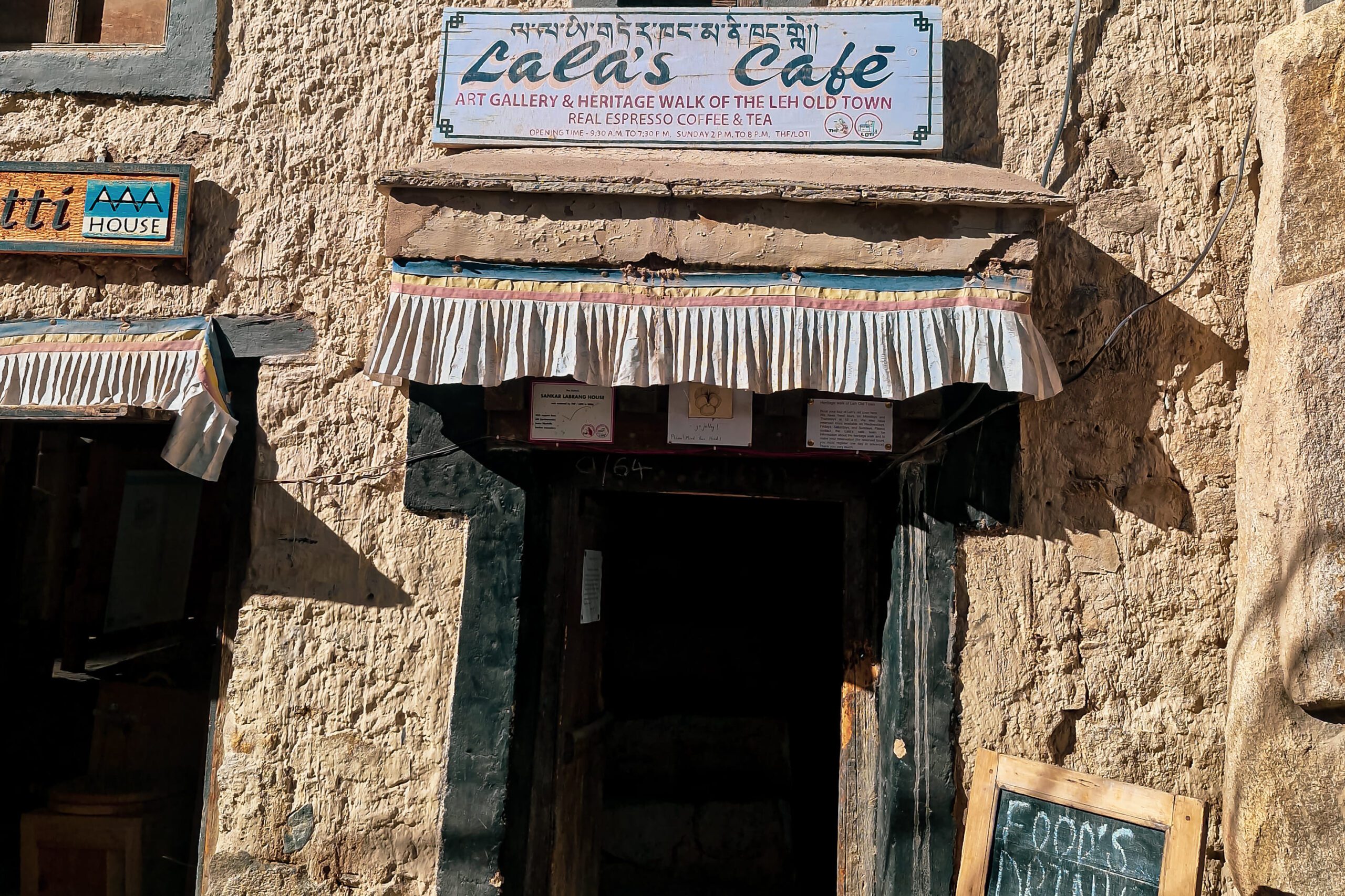Walk down the lanes of Leh’s Old Town and you’ll find a little gem tucked quietly between mud-brick houses and prayer flags, Lala’s Cafe in Leh. But it’s not just another café. This place holds centuries of stories that make every sip of coffee here feel special.
From Stone to Spirit
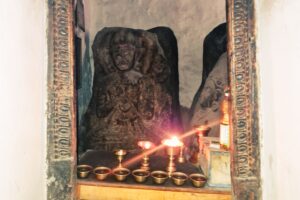

Traditional artistry preserved on Lala’s Cafe ground floor
To reach Lala’s Cafe, you must wander through Leh’s ancient pathways, a maze of narrow alleys lined with mud-brick houses, old murals and fluttering Buddhist prayer flags. Each corner whispers untold stories of caravan traders, artisans and monks who once made this town their home.
The café itself stands gracefully in a restored two-century-old building, whose origins are as fascinating as its present. Long before it became Leh’s first café, this structure was a temple built around a carved stone statue of Buddha. The artisans who shaped it came from Kargil and over time, monks from the nearby Sankar Monastery made this sacred place their residence and place of prayer.
When the monks eventually moved away, silence settled here. For decades, the temple stood forgotten, its walls crumbling, its doors sealed, its spirit waiting.
A New Life
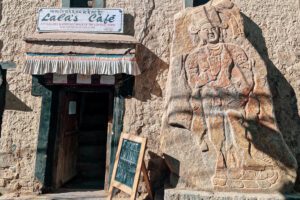

Lala’s Cafe in Leh from the outside
Then, in 2003, an NGO called THF (Tibet Heritage Fund) stepped in. They saw not just a old monastery but a heritage treasure waiting to breathe again. Slowly, the place was restored. By 2006, the space reopened to the world, not as a temple this time but reborn as Lala’s Cafe, Leh’s very first heritage café. The transformation aimed to create a cultural meeting ground, one where locals, travelers, artists and historians could gather, sip and share ideas under the same ancient roof.
Why “Lala’s”?
The name has its own quirky story. Below the café once stood a small general store. In Ladakh, shopkeepers are often called “lala”. And so, the name stuck.
A Café with Character
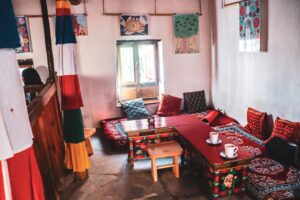

Cozy traditional seating inside Lala’s Cafe
Step inside and the café feels like stepping into another world. The walls are alive with paintings and posters all of them made by a Portuguese artist who left a part of his art here. The architecture is pure Ladakhi with mud walls and traditional woodwork. The seating is arranged with choktse which are traditional Ladakhi low tables. There’s also a small wooden lion structure at the entrance, a guardian believed to protect monasteries and even homes. And if you’re the type who loves little souvenirs, you can buy postcards here too, memories you can carry in your pocket.
What’s Brewing?


Taste tradition with Ladakhi yellow berry juice
Now let’s talk about what makes people come back again and again. The menu has its own special gems:
a) Khambir – the famous local bread which is thick and crusty and perfect with butter tea or coffee.
b) Sea Buckthorn – a rare Ladakhi yellow berry coffee, tangy and refreshing.
c) Arabic Espresso – because sometimes you just need that strong international punch.
Pair this with the quiet hum of old walls and maybe a small exhibition happening in the gallery corner and you’ll understand why people say there’s no café in Leh quite like this one.
More than Just Coffee
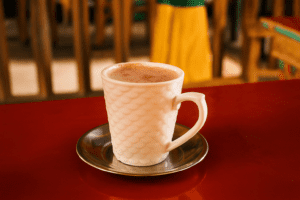

A sweet pause at Lala’s Cafe
Over the years, Lala’s Cafe in Leh has become a cultural hub. Some call it a café. Some call it Leh’s Heritage House. Whatever the name, it’s really a living story where the past and present sit together over a cup of coffee.
Why You Should Visit
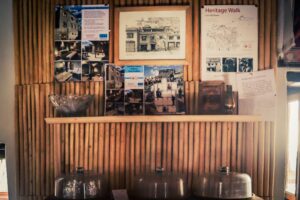

Where history and coffee come together
When in Leh, don’t just tick off the monasteries and palaces. Take a detour into the Old Town, walk into Lala’s Cafe in Leh and sit down for a while. Order a Sea Buckthorn or an espresso and let your eyes wander across the Ladakhi woodwork and let the walls tell their stories.
Because here, in this little café, you don’t just drink coffee. You taste history.

